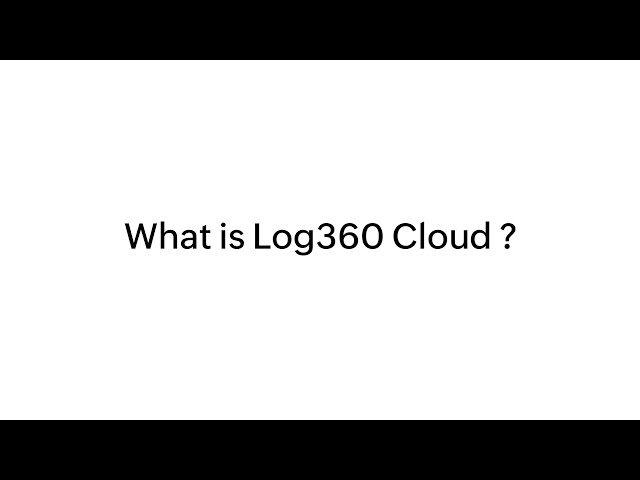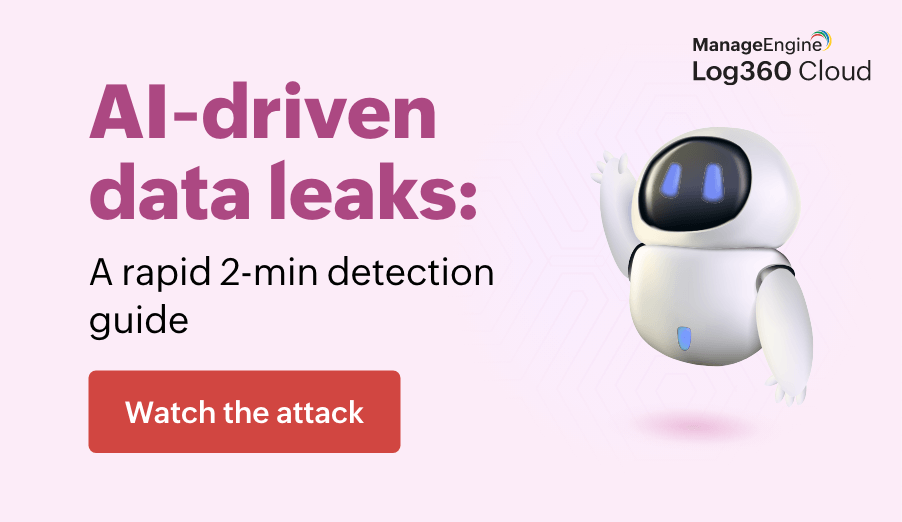Related content
Cyberattacks have increased by a staggering 600% since the onset of the COVID-19 pandemic, a recent marketplace study notes. But that's just the tip of the iceberg. Many organizations worldwide recognized and braced for additional cyberattacks challenging their remote and hybrid workforces. Still, in 2023 there was a 72% increase in data breaches with 2,365 cyberattacks affecting more than 343 million victims, a significant increase from the previous all-time record notched just two years earlier, according to Forbes Advisor.
As businesses continue to migrate their operations to the digital world, the realm of cyberthreats continues to expand. With each passing day, new threats emerge, and hackers become more ingenious with their methods. The need for an impenetrable digital defense has never been more urgent. In this high-stakes game of digital cat and mouse, a critical question arises: How can organizations protect their sensitive data, financial assets, and reputation against the relentless onslaught of cybercriminals? This is where cloud-based SIEM emerges as a game-changer, providing organizations with a robust and centralized solution to manage their security operations effectively in on-premises and cloud environments.
Let's delve into the transformative potential of cloud-based SIEM, explore its workings, benefits, and real-world applications.
What is a cloud based SIEM?
A cloud based security information and event management (SIEM) is a cybersecurity solution designed to protect organizations from cyberthreats, identify vulnerabilities, and help them remain compliant with stringent data regulations. It leverages cloud computing technologies to address the challenges faced by the evolving cybersecurity landscape and the increasing complexity of IT infrastructures.
In simpler terms, it's the all-seeing, all-hearing guardian of an entire digital domain with capabilities such as centralized monitoring, analysis, and management of security events and incidents across an organization's entire IT infrastructure. Traditional SIEM tools typically require on-premises hardware and software installations, along with ongoing maintenance and updates. However, a cloud SIEM operates as a cloud-based service, often hosted and managed by a third-party provider.

How does a cloud based SIEM solution work?
A cloud-based SIEM solution performs several key functions to enhance the security posture of an organization's cloud environment. It works by collecting, aggregating, correlating, and analyzing security data from various cloud sources. The collected logs are stored in a secure cloud platform to facilitate reduced IT spending.
Here's a breakdown of how a cloud-based SIEM solution works:
1. Log management
A cloud SIEM tool gathers data from various sources, such as logs, events, and alerts from cloud-based services, applications, servers, network devices, and endpoints. This data includes user activities, system events, network traffic, and security incidents.
2. Normalization
It organizes the collected data for easier analysis and correlation while ensuring consistency and coherence across different types and sources of information.
3. Real-time monitoring
It continuously monitors the cloud infrastructure and applications in real-time for security events and anomalies. It detects unauthorized access attempts, unusual user behaviors, system vulnerabilities, and potential indicators of compromise, providing immediate visibility into emerging threats and security incidents as they occur.
4. Correlation and analysis
A cloud-based SIEM solution applies advanced analytics and correlation techniques to detect attack patterns. It correlates data from multiple sources to identify security incidents and prioritize them based on severity and potential impact.
5. Threat detection and alerting
It identifies potential threats and generates alerts and notifications for security teams. These alerts include detailed information about the detected threats, their characteristics, and the necessary recommendations for mitigation.
6. Incident response and investigation
A cloud-based SIEM tool provides security analysts with the tools and workflows for incident response and investigation. It enables them to investigate incidents, gather context, and take appropriate actions to contain and remediate the detected threats.
7. Continuous monitoring and reporting
It monitors security posture in real-time, providing visibility into security events and trends. It generates reports and dashboards to track key security metrics, demonstrate compliance with industry standards, and identify areas for improvement.
8. Integration and orchestration
A cloud-based SIEM solution integrates with other security technologies and solutions such as threat intelligence feeds, vulnerability management systems, and ticketing systems. It supports automation and orchestration to streamline security operations and response processes.
In a nutshell, a cloud-based SIEM solution provides centralized visibility, detection, and incident response capabilities across cloud infrastructure, aiding organizations in proactively identifying and mitigating security threats.
What are the differences between traditional SIEM and cloud based SIEM solutions?
Traditional and cloud-based SIEM solutions serve the same purpose of collecting, analyzing, and managing security event data to detect and respond to cyberthreats, but they differ in several key aspects due to their deployment models and architectures.
Here are the main differences between a traditional SIEM and a cloud-based SIEM:
| Features | Traditional SIEM | Cloud-based SIEM |
|---|---|---|
| Deployment model | It is typically deployed on-premises within the organization's data center. It requires hardware infrastructure, software installation, and ongoing maintenance by the organization's IT team. | It is hosted and managed by a third-party cloud service provider, delivered as a cloud-based service which eliminates the need for on-premises hardware and infrastructure, enabling easy access through the internet. |
| Data sources | It primarily focuses on on-premises data sources like firewalls, servers, and network devices. | It handles data from both cloud-based services and on-premises sources. It provides visibility into cloud activities and data. |
| Scalability | It is often limited by the capacity of on-premises hardware and infrastructure. Scaling up might require additional hardware investments and manual configuration. | It enables organizations to scale their security operations up or down based on their requirements. The cloud-based SIEM providers handle the infrastructure scaling, ensuring flexibility and elasticity. |
| Accessibility and management | It is accessible within the organization's internal network, requiring VPN connections or direct access to the SIEM console for management and monitoring. | It is accessible from anywhere with an internet connection, offering greater flexibility for security teams to manage and monitor their security operations remotely. |
| Maintenance and updates | Organizations are responsible for maintaining and updating the SIEM software as well as managing their hardware upgrades, patching, and backups. | Maintenance tasks such as software updates, patches, and backups are managed by the cloud service provider, relieving organizations of the burden, enabling them to focus on security operations. |
| Cost structure | It involves upfront capital expenses for hardware, software licenses, and implementation costs. Some of the ongoing operational expenses include maintenance, upgrades, and staffing. | It typically follows a subscription-based pricing model, where organizations pay for the services they use on a monthly or annual basis. Costs are often based on factors such as data volume, retention periods, and additional features. |
| Integration | Integrating traditional SIEM with other security tools and systems can be complex and might require additional configurations or integrations to collect and analyze data from cloud-based services and applications. | It is built to seamlessly integrate with cloud-native environments, enabling organizations to monitor and secure their cloud infrastructure, platforms, and applications effectively. They often have native integrations with major cloud service providers. |
While traditional SIEM solutions have been the go-to for on-premises security monitoring, cloud-based SIEM solutions are tailored for modern, cloud-driven environments. They provide improved scalability, accessibility, and integration, making them essential for organizations looking to protect their digital assets in an era of evolving cyberthreats and remote workforces.
However, organizations should also consider factors such as data privacy, security controls, and dependency on cloud service providers when choosing between traditional and cloud-based SIEM solutions.
Want to assess if Log360 Cloud suits your organization's security needs?
What should you consider before switching to a cloud based SIEM?
Switching to a cloud-based SIEM solution can provide numerous benefits for organizations, but it's essential to consider several factors before making the transition.
Here are some key considerations to take into account:
1. Security and compliance requirements
Ensure that the cloud-based SIEM solution meets your organization's security and compliance requirements, including data privacy regulations, industry standards, such as HIPAA, the PCI DSS, and the GDPR, and other internal security policies. Evaluate the security controls, encryption methods, access controls, and compliance certifications offered by the cloud-based SIEM provider.
2. Data sensitivity and privacy
Assess the sensitivity of the data that will be stored and processed by the cloud-based SIEM solution. Consider the implications of storing sensitive information, such as personally identifiable information (PII), intellectual property, or proprietary data, in the cloud. Evaluate the data encryption, segregation, and data retention options offered by the cloud-based SIEM provider to protect sensitive data.
3. Integration and compatibility
Evaluate the compatibility of the cloud-based SIEM solution with your existing IT infrastructure, applications, and security tools. Ensure that the cloud-based SIEM can integrate seamlessly with your cloud platforms, on-premises systems, network devices, endpoints, and third-party security solutions. Consider the availability of APIs, connectors, and automation capabilities for easy integration and orchestration.
4. Performance and scalability
Assess the performance and scalability capabilities of the cloud-based SIEM tool to handle your organization's current and future needs. Consider factors such as data volume, event processing speed, storage capacity, and scalability. Ensure that the cloud-based SIEM solution can scale elastically to accommodate fluctuations in workload and data growth without compromising performance.
5. SLAs and support
Review the SLAs and support offerings offered by the cloud-based SIEM provider. Ensure that the SLAs align with your organization's uptime, availability, and response time requirements. Evaluate the availability of technical support, customer service channels, and escalation procedures to address any issues or concerns promptly.
6. Cost and pricing model
Understand the cost structure and pricing model of the cloud-based SIEM solution, including subscription fees, usage-based charges, storage costs, and any other additional fees for premium features or support. Consider the total cost of ownership over the long-term, including implementation costs, training expenses, and ongoing maintenance costs. Compare pricing options from multiple vendors to ensure cost-effectiveness.
7. Data governance and access controls
Define clear data governance policies and access controls to govern access to sensitive data within the cloud-based SIEM solution. Establish roles and permissions for administrators, analysts, and other users to ensure proper segregation of duties and minimize the risk of unauthorized access or misuse. Implement MFA and strong authentication mechanisms to enhance security.
8. Training and skills development
Invest in training and skills development for your IT and security teams to ensure they have the knowledge and expertise required to effectively deploy, configure, and manage the cloud-based SIEM tool. Provide training on security best practices, threat detection techniques, incident response procedures, and utilization of the cloud-based SIEM solution.
By carefully considering these factors before migrating to a cloud-based SIEM solution, organizations can ensure a smooth transition and maximize the benefits of cloud-based security management while effectively addressing their security and compliance requirements.
Want to manage your cloud logging costs with efficient log management?
How can you strengthen your security with Log360 Cloud?
ManageEngine Log360 Cloud is a cloud-based SIEM solution that delivers comprehensive visibility and security management across both on-premises and cloud environments. It provides log management, threat intelligence, incident detection and response, regulatory compliance, and cloud-native capabilities, all from a single platform.
Let's see how Log360 Cloud can strengthen the security posture of an organization. Imagine a fast-growing e-commerce platform, Acme Technologies, that has experienced significant growth in the recent years. It stores sensitive customer data, and the ever-increasing number of cyberthreats raised concerns about data breaches and system vulnerabilities. Acme Technologies recognized the need for an advanced security solution, which led to its adoption of Log360 Cloud.
Challenges faced
Acme Technologies faced several security concerns:
1. Lack of visibility
With its business expanding into multiple cloud environments and geographies, the organization struggled to maintain visibility over its entire infrastructure. Its traditional SIEM tool could not effectively monitor and analyze cloud-based activities, leaving a significant blind spot in its security posture.
2. Scalability issues
The on-premises SIEM could not scale efficiently to accommodate the rapid growth in data and users. As the company expanded its cloud services, the traditional SIEM tool became overwhelmed with the increasing volume of logs and events, hindering its performance.
3. Complex threats
Acme Technologies encountered increasingly sophisticated cyberthreats, including insider threats, malware, and ransomware, leaving it vulnerable to financial and reputational losses.
Solution
The organization decided to implement a cloud-based SIEM solution, Log360 Cloud.
Here's how it worked for them:
1. Log management
Acme Technologies configured Log360 Cloud to collect logs and data from various sources, including cloud services, network devices, servers, and applications across its global infrastructure. This data was securely sent to the cloud.
2. Real-time analysis
Log360 Cloud performed real-time analysis, utilizing threat intelligence feeds, anomaly detection, and ML algorithms to identify security events and potential threats.
3. Incident detection and alerting
Whenever Log360 Cloud detects unusual activity or a potential threat, it triggers alerts in real time. These alerts were sent to the security team, allowing them to initiate an immediate response.
4. Automated responses
Acme Technologies set up automated response actions for known threats. For example, Log360 Cloud could isolate compromised devices or block malicious IP addresses automatically.
5. Incident investigation
Security analysts used Log360 Cloud's user-friendly interface to investigate alerts further. They had access to historical data and could visualize the timeline of security incidents.
Benefits
1. Enhanced visibility
Log360 Cloud provided comprehensive visibility into Acme Technologies' cloud and on-premises infrastructure, enabling them to identify vulnerabilities and monitor user activities worldwide.
2. Scalability
Log360 Cloud efficiently scaled with the organization's growth, accommodating the increasing volume of logs and users without affecting performance.
3. Advanced threat detection
The ML algorithms in Log360 Cloud identified complex threats, including insider threats and zero-day attacks, which its traditional SIEM had struggled to detect.
4. Faster incident response
Automated responses reduce response times, enabling the security team to mitigate threats quickly.
5. Compliance
Log360 Cloud simplified compliance reporting by providing pre-configured reports that aligned with industry regulations.
By adopting Log360 Cloud, Acme Technologies strengthened its security posture, protected sensitive customer data, and responded more effectively to emerging threats. The organization's ability to scale, adapt, and secure its global infrastructure demonstrates the power of cloud-based SIEM in the modern world of cybersecurity. With a proactive approach to security, Acme Technologies continued to build customer trust and maintain its competitive edge in the e-commerce industry.
Want to explore Log360 Cloud for free?
Cloud SIEM FAQs
1. What is cloud SIEM?
Cloud SIEM protects your organizations by centralizing monitoring, analyzing security events, and detecting threats across cloud, on-premises, and hybrid environments. It offers scalability, real-time analytics, and automated response to cyber threats, helping security teams quickly identify and mitigate risks while supporting compliance requirements.
2. What is the difference between cloud-based and cloud-native SIEM?
Cloud-based SIEMs are traditional SIEM tools hosted in the cloud, often migrated from on-premises setups, with tightly integrated components that may cause downtime during updates. Cloud-native SIEMs are designed specifically for the cloud, using microservices for flexibility, scalability, and minimal disruption, fully leveraging cloud capabilities.
3. How is my data protected and secured in the cloud environment?
Your data in a Cloud SIEM is protected using strong encryption both at rest and in transit, along with robust authentication methods. The system continuously monitors for threats, generating alerts and enabling rapid response to secure your environment.
4. What are the benefits of a cloud-based SIEM?
With a cloud-based SIEM, you can effortlessly scale to handle massive data volumes and adapt to the fast-changing cloud landscape. It offers global access without the hassle of complex installations, maintenance, or manual scaling required by on-premises solutions.
5. What is Log360 Cloud?
Log360 Cloud is a powerful cloud-based SIEM solution that aggregates logs from throughout your network and enables you to manage them from the cloud. The solution helps you make sense of all the events happening in your network by having them correlate with each other, configure alerts, and identify and respond to threats faster.
- What is a cloud based SIEM?
- How does a cloud based SIEM solution work?
- What are the differences between traditional SIEM and cloud based SIEM solutions?
- What should you consider before switching to a cloud based SIEM?
- How can you strengthen your security with Log360 Cloud?
- Cloud SIEM FAQs


